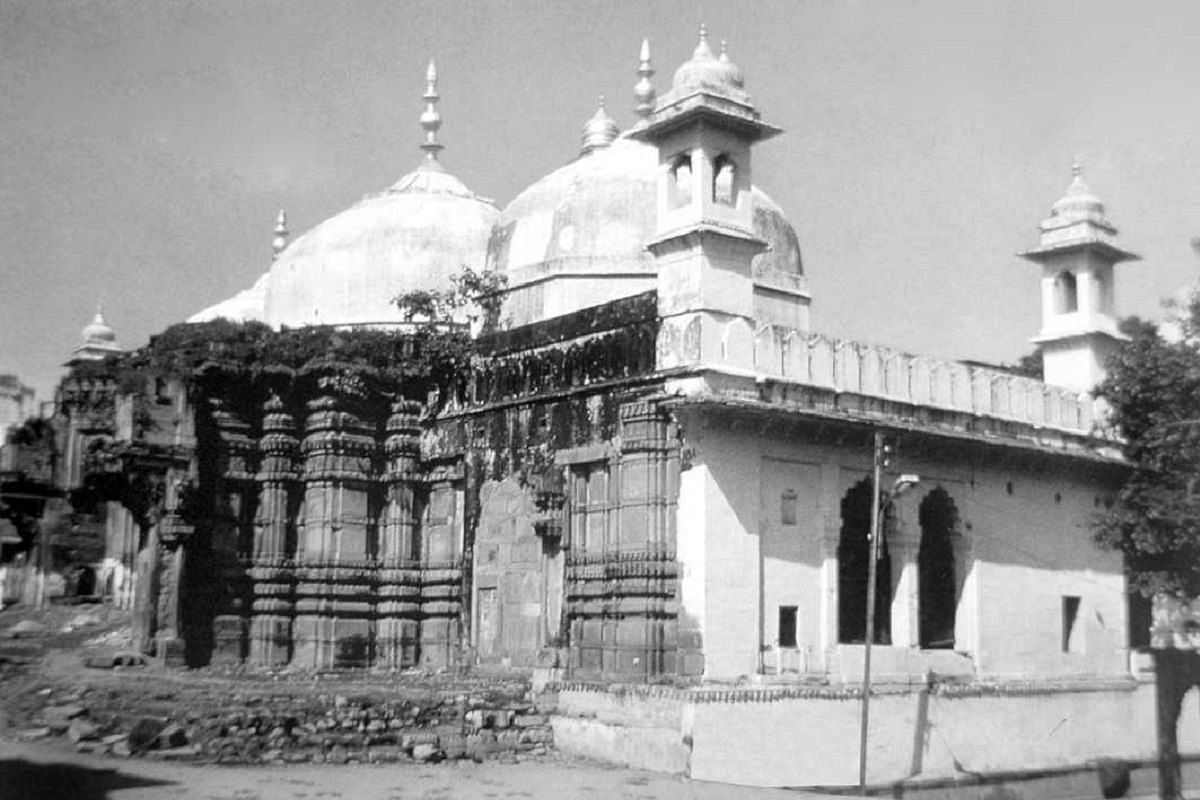News Brief
Explained: What The ASI Survey Is Looking For In The Gyanvapi Structure

Disputed Gyanvapi structure in Varanasi with remnants of a Hindu temple. (Wikimedia Commons)
The Archeological Survey of India (ASI) is currently conducting a scientific survey of the Gyanvapi Mosque in Varanasi, which is situated adjacent to the iconic Kashi Vishwanath temple.
This survey has been authorised by the Allahabad High Court in response to a petition filed by four Hindu women who pointed out that that the mosque, built in the 17th century, was constructed on top of a pre-existing temple.
The survey is being conducted in order to investigate and ascertain the historical findings provided by the Hindu activists regarding the existence of a temple at the site of the Gyanvapi mosque.
These activists highlight how historical and physical evidence shows that the temple was demolished in the 17th century under the orders of Mughal emperor Aurangzeb, and partially converted into a mosque.
The initial order for the survey was issued by a district court in Varanasi, following the petitioners' argument that conducting a survey was the only way to determine whether a temple had been destroyed to make way for the prominent mosque.
The survey of the Gyanvapi Mosque is a significant step taken by the ASI to address the historical and religious controversies surrounding the site.
By conducting a scientific survey, the ASI aims to gather evidence and shed light on the facts presented by the Hindu activists and devotees, ultimately contributing to a better understanding of the site's history.
The court has directed the director of ASI to conduct a thorough scientific investigation using ground-penetrating radar survey, excavation, dating methods, and other modern techniques.
The survey team will also perform tests to ascertain the age of the pillars and the western wall of the mosque.
In addition to the tests mentioned, a radar survey will be conducted to uncover what lies beneath the structure. However, this survey will be limited to the three domes of the mosque.
As part of the survey, the team will thoroughly search all the cellars within the compound and compile a comprehensive list of the artifacts discovered within the building.
Additionally, the team will conduct tests to determine the age of these artifacts.
Further, in accordance with the Supreme Court order, the survey will not encompass the mosque's 'wazukhana,' which is the area where the petitioners highlighted that a 'shivling' was located.
Furthermore, the court has specifically instructed the ASI to take necessary precautions to prevent any damage from occurring to the mosque during the survey process.
The court has directed the Director of ASI to ensure that the structure standing on the disputed land is not damaged and remains intact.
Support Swarajya's 50 Ground Reports Project & Sponsor A Story
Every general election Swarajya does a 50 ground reports project.
Aimed only at serious readers and those who appreciate the nuances of political undercurrents, the project provides a sense of India's electoral landscape. As you know, these reports are produced after considerable investment of travel, time and effort on the ground.
This time too we've kicked off the project in style and have covered over 30 constituencies already. If you're someone who appreciates such work and have enjoyed our coverage please consider sponsoring a ground report for just Rs 2999 to Rs 19,999 - it goes a long way in helping us produce more quality reportage.
You can also back this project by becoming a subscriber for as little as Rs 999 - so do click on this links and choose a plan that suits you and back us.
Click below to contribute.
Latest